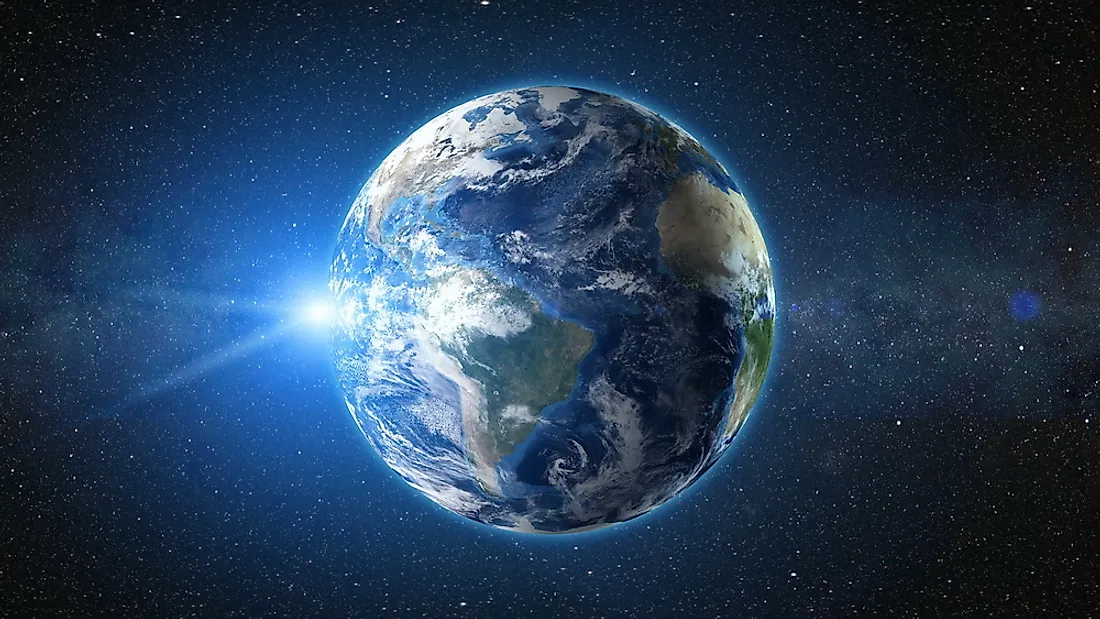How Do We Know That the World is Round?

The concept of a spherical earth dates back to the 6th century BCE. From Hellenistic astronomy in the 3rd century BCE to circumnavigation in the 16th century CE, multiple scientific disciplines have put forth arguments proving the earth is round. This article looks at some of the many reasons why science has definitively proven the earth is a sphere.
Circumnavigation
Portuguese explorer Ferdinand Magellan, financed by the Spanish Crown, began the first successful circumnavigation of the globe. Over a period of 3 years from August 1519 to September 1522, Magellan and his crew crossed the Atlantic and Pacific Oceans departing from and returning to Seville, Spain. Many years later, the Transglobe Expedition traversed the globe vertically for a 100,000-mile circumpolar navigation. They departed Greenwich, United Kingdom in September 1979 traveling south and reached the South Pole in December 1980, then traveled north to reach the North Pole in April 1982 before setting south once again to return to Greenwich in August 1982.
Constellations
Constellations are groups of stars that are grouped into patterns or images. Philosophers from Ancient Greece and India noticed that depending on where you were located you would see different stars. In the 4th century BCE, the Ancient Greek philosopher Aristotle discovered that the stars seen in Egypt and the stars seen in Cyprus were different than the stars seen in more northerly regions. From these observations, he determined that the earth must be spherical, if not everyone on earth would be able to see the same constellations in the sky.
Visibility
Many philosophers, geographers, and sailors noticed that the curvature of the earth limits visibility when sailing. Strabo and Claudius Ptolemy both pointed out that when sailing towards objects they tend to rise from the sea as they are hidden by the curvature of the earth. In addition, taller objects like mountains are visible at greater distances.
Shadows
Many philosophers used observation of shadows to confirm that the earth is round. Eratosthenes attempted to calculate the circumference of earth based on these shadows when he learned that during the Summer Solstice, the sun was directly overhead in Syene leaving no shadow while in nearby Alexandria, the sun cast a shadow. This difference led him to believe that the earth was curved and as such a spherical globe.
Eclipse
Aristotle, in addition to his observation of the stars, also noticed that during a lunar eclipse, the earth created a round shadow on the moon. This can be observed time and time again as the earth creates a dark circular shadow that moves across the moon. The eclipse works to prove that the earth is round in two ways. Firstly, the eclipse is only visible from half the earth at a time. Secondly, for each eclipse the earth is pointed in a slightly different direction with the moon not directly positioned overhead, meaning that the shadow that appears on the moon would not be consistently circular.
Time Zones
As the earth spins on its axis, parts of the globe are in sunlight while others are in darkness. Ancient timekeepers determined that the sun reached its highest point in the sky at noon and organized the hours of the day against that. As the sun reaches its highest point in the sky at different times for different locations, local solar noon established the time. To standardize time, scientists in the 19th century divided the globe into 24 different time zones offset by one hour each based on a 24-hour global clock. Today, there are time zones with 30-minute and 45-minute offsets which has increased the number of time zones to well over 30 time zones. As the earth is a sphere, when traveling from one time zone to another, one can see the sun set twice.











